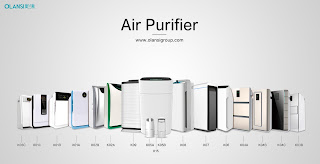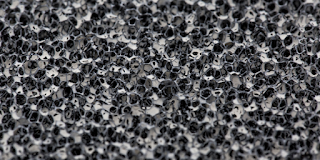Olansi Air Purifier vs. Ionizer
Both air purifiers and ionizers work to remove the kinds of contaminants from indoor air that can make life miserable for allergy sufferers and those with respiratory illnesses. Air filtration purifiers use a different air-cleaning technology than that used by ionizers, a type of purifier that uses electrostatic charges to clean the air, but some air-cleaning units employ multiple technological approaches to maximize their purification capabilities.
What Olansi Air Purifiers Do
Mechanical filtration purifiers pass air through filter material that traps pollutants and allergens such as dust, pollen, smoke and animal dander, the types of contaminants that are most troublesome to asthma and allergy sufferers, children, the elderly and pets. High-efficiency particulate air filters are certified by the U.S. Department of Energy as being capable of removing at least 99.97 percent of particles 3 microns in diameter or larger, and they are very effective at trapping dust, smoke, mold spores and pollen. Filters that don't achieve a true HEPA rating are typically capable of trapping dust and pet dander, but they may allow smaller particles, such as spores and pollen, to pass through. Some purifiers also use activated carbon filters to remove some -- but not all -- gaseous pollutants and odors from the air as well.
How Ionizers Are Different
Ionizers release negatively charged ions into the air, and these ions impart their charges to pollutant particles, which causes the particles to stick to each other or objects in the room and settle out of the air. Some mechanical filtration purifiers also incorporate a mechanism that gives an electric charge to pollutant particles as they pass through the unit; the charged particles then stick to an oppositely charged plate inside the purifier. Ionizers and electrostatic purifiers can be effective at removing small particles, such as bacteria, from the air, but they may be less effective than mechanical filters at trapping larger particles such as dust and dander, making them less helpful to allergy and asthma sufferers.
How the Devices are Rated
Purifiers are rated according to how effective they are at removing contaminants from the air. Mechanical filters are classified by a minimum efficiency reporting value; high-efficiency filters have MERV ratings between 14 and 16, and HEPA filters have MERV ratings between 17 and 20. The Association of Home Appliance Manufacturers' Clean Air Delivery Rate values measure the volume of purified air that passes through a given purifier; a purifier with a CADR number between 98 and 130 is able to effectively clean the air in a midsize room.
Purifier and Ionizer Limitations
Purifiers can remove only airborne contaminants, and units that rely on mechanical filters or electrostatic precipitators can purify only the air that actually passes through the unit. Because many pollutants and allergens settle out of the air and onto surfaces quickly, they may avoid the action of the purifier and stay in the room. Electrostatic purifiers and ionizers produce ozone, which is a respiratory irritant and may have an adverse effect on those who suffer from asthma or other respiratory problems.
For more information,please follow www dot olansigroup dot com
Email: sales13 at olansi dot cc
What Olansi Air Purifiers Do
Mechanical filtration purifiers pass air through filter material that traps pollutants and allergens such as dust, pollen, smoke and animal dander, the types of contaminants that are most troublesome to asthma and allergy sufferers, children, the elderly and pets. High-efficiency particulate air filters are certified by the U.S. Department of Energy as being capable of removing at least 99.97 percent of particles 3 microns in diameter or larger, and they are very effective at trapping dust, smoke, mold spores and pollen. Filters that don't achieve a true HEPA rating are typically capable of trapping dust and pet dander, but they may allow smaller particles, such as spores and pollen, to pass through. Some purifiers also use activated carbon filters to remove some -- but not all -- gaseous pollutants and odors from the air as well.
How Ionizers Are Different
Ionizers release negatively charged ions into the air, and these ions impart their charges to pollutant particles, which causes the particles to stick to each other or objects in the room and settle out of the air. Some mechanical filtration purifiers also incorporate a mechanism that gives an electric charge to pollutant particles as they pass through the unit; the charged particles then stick to an oppositely charged plate inside the purifier. Ionizers and electrostatic purifiers can be effective at removing small particles, such as bacteria, from the air, but they may be less effective than mechanical filters at trapping larger particles such as dust and dander, making them less helpful to allergy and asthma sufferers.
How the Devices are Rated
Purifiers are rated according to how effective they are at removing contaminants from the air. Mechanical filters are classified by a minimum efficiency reporting value; high-efficiency filters have MERV ratings between 14 and 16, and HEPA filters have MERV ratings between 17 and 20. The Association of Home Appliance Manufacturers' Clean Air Delivery Rate values measure the volume of purified air that passes through a given purifier; a purifier with a CADR number between 98 and 130 is able to effectively clean the air in a midsize room.
Purifier and Ionizer Limitations
Purifiers can remove only airborne contaminants, and units that rely on mechanical filters or electrostatic precipitators can purify only the air that actually passes through the unit. Because many pollutants and allergens settle out of the air and onto surfaces quickly, they may avoid the action of the purifier and stay in the room. Electrostatic purifiers and ionizers produce ozone, which is a respiratory irritant and may have an adverse effect on those who suffer from asthma or other respiratory problems.
For more information,please follow www dot olansigroup dot com
Email: sales13 at olansi dot cc


评论
发表评论